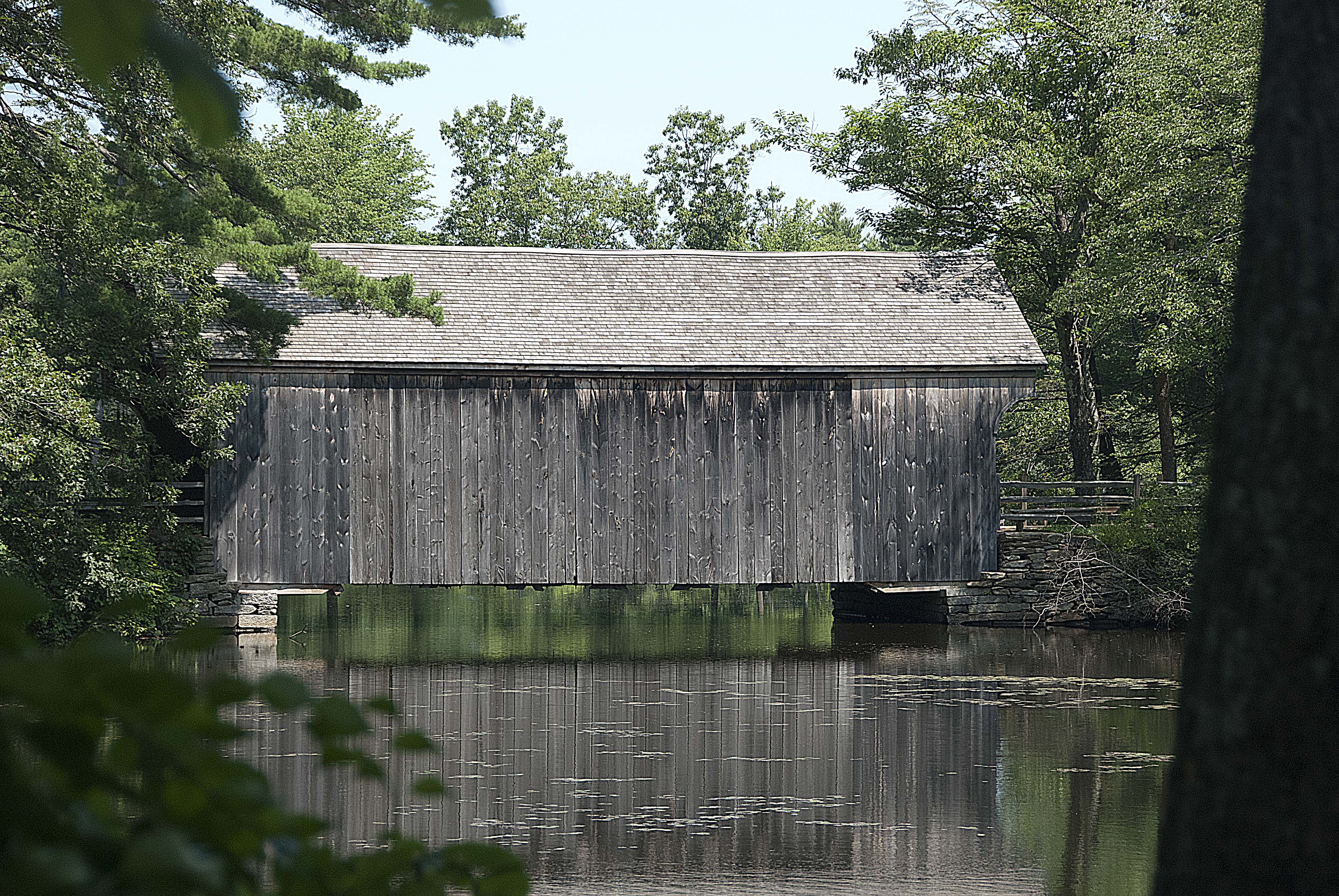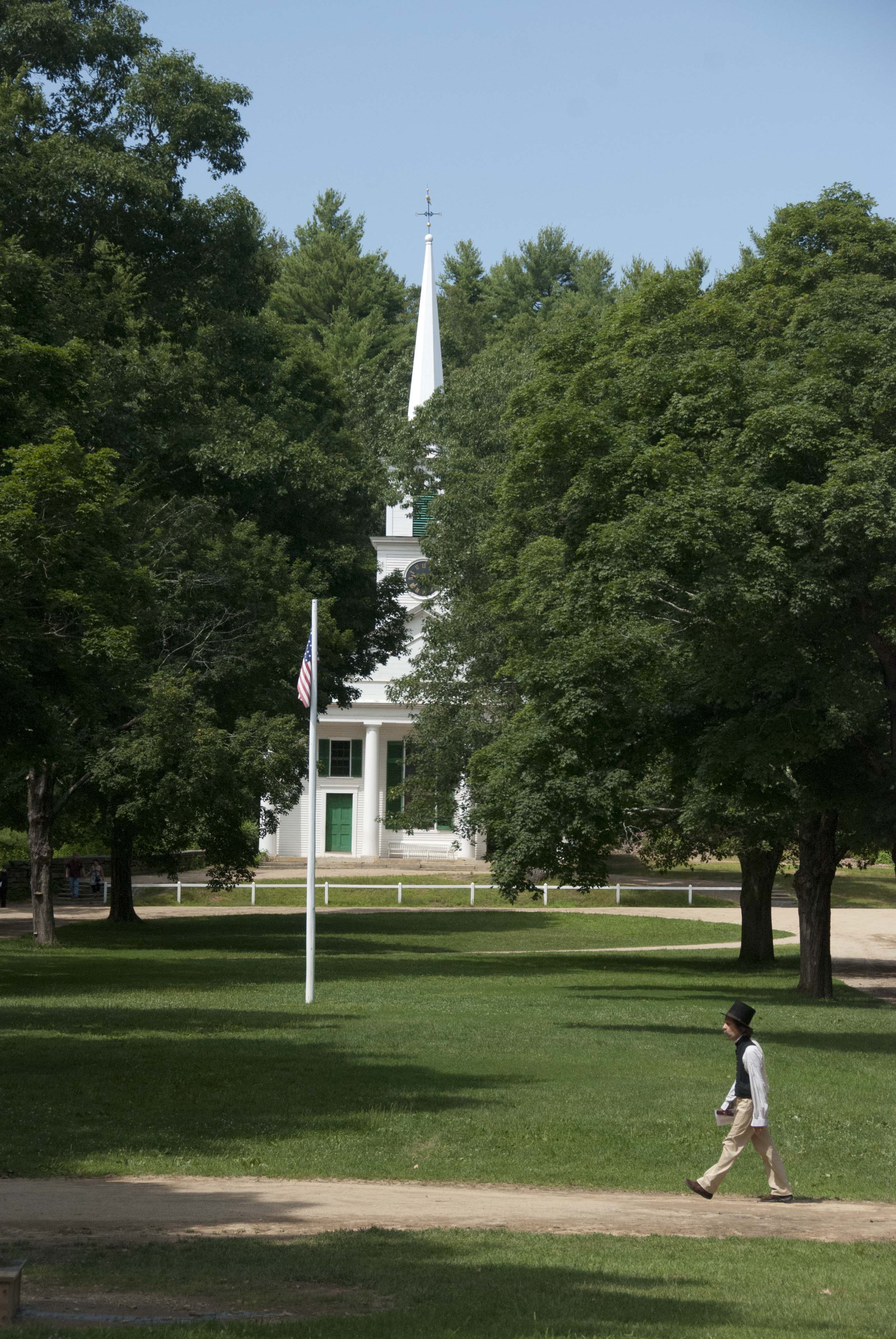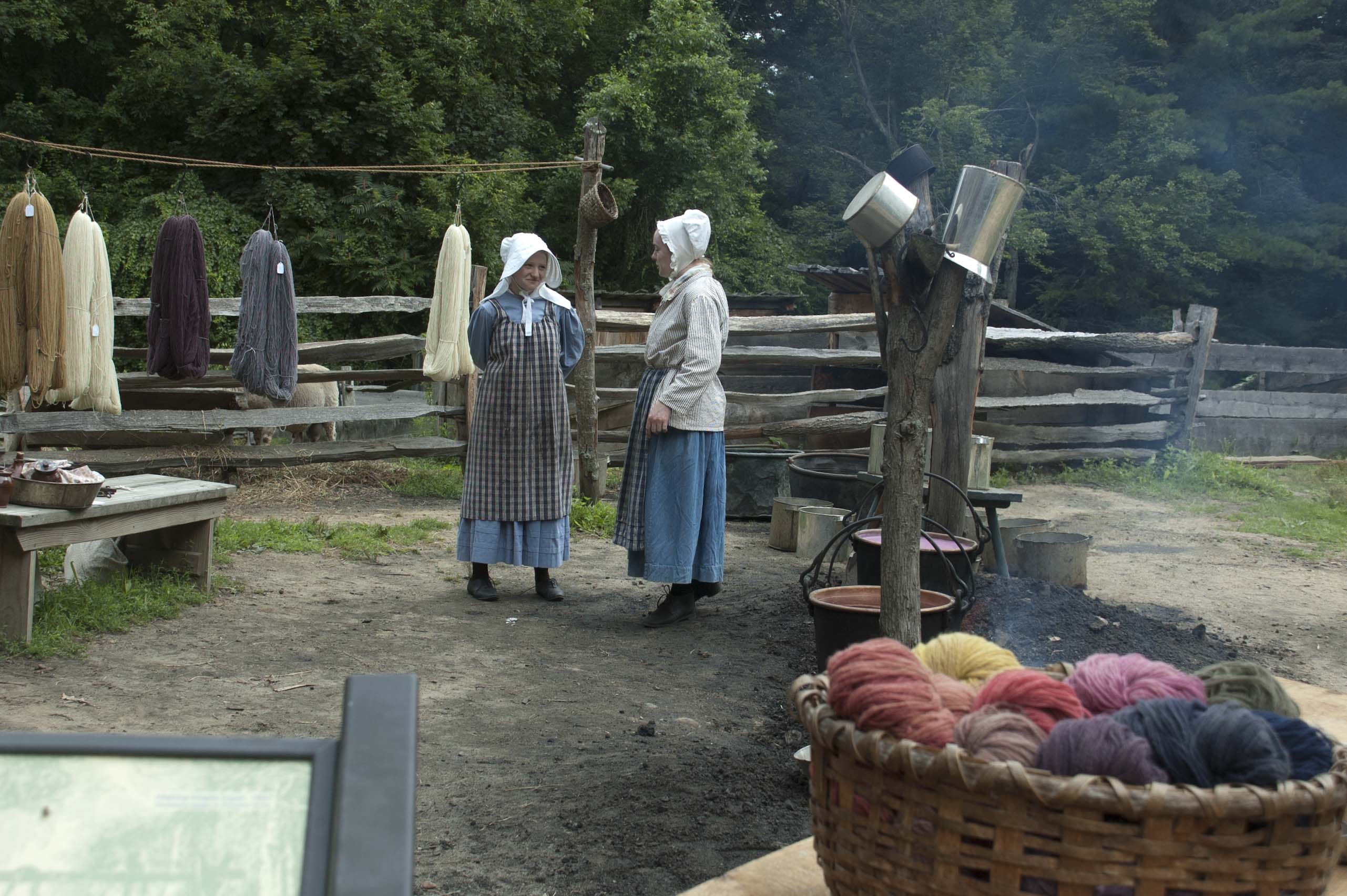Northeastern US in 2014 -- Ancestors, Descendants, and American History, page 8
All pictures, unless otherwise noted, are copyright 2013 by John A. and Elizabeth B. Lucas.
All rights reserved.
Greene County, PA Harper's Ferry, WV Baltimore and St. Michaels, MD Williamsburg and Jamestown, VA Charlottesville, VA
Skyline Drive (Shenandoah National Park), VA Hartford, CT Old Sturbridge Village, MA
Old Sturbridge Village, MA
Our final stop was Old Sturbridge Village in (surprise) Sturbridge, Massachusetts, about 90 minutes driving from our home. We last visited "OSV" in 1973, the year before we were married. Each of us had visited with family in the 50s or 60s.
Old Sturbridge Village is a synthetic village -- while all of the buildings are original New England buildings, each has been purchased somewhere else, taken apart and reassembled on the present site to make up a small rural New England town of the 1830s. Greenfield Village (part of the Henry Ford Museum in Dearborn, Michigan) is a synthetic village as well, but not limited to a single era or region.
Williamsburg and Old Sturbridge Village provide comparisons and contrasts
- Williamsburg was a colonial and state capital of a southern state, set in 1770s for the purposes of tours and events
- Sturbridge is created as a rural New England village circa 1830s
- Direct contrasts can be made by crafts present in both, such as the printer, miller or blacksmith

There has been a subtle hand guiding the craftspeople and docents -- there is a noticeable discussion on how the village worked, how people bought and sold goods without much actual currency or coins around. A bit like modern bank statements and credit cards rather than cash in hand. It wasn't strictly a barter economy as transactions were in terms of dollars and cents but little physical money changed hands. Rather account books of credits and debits were kept.


Two New England icons are the covered bridge and the village green and Congregational Church. Most of the bridges have gone, but our own town, like many others, still has its green and meeting house.

Comparing the printers demonstrated the passage of 60 years and independence as a nation. As noted before, while the colonial printer had but a single font that had to be imported from England, the 1830s printer had multiple fonts and could order from a catalogue from New York or Boston if a commission had special requirements. In general, everything was made locally if possible in a major shift from colonial times.





Much of Sturbridge is hands-on, especially for young people -- farming, weaving, even blacksmithing. Also shown wool dyeing, coopering barrels and butter churns, pottery.

We even got to hear a talk and organ performance in the Congregational Meeting House. The organ built in 1824 in New Hampshire was in dire need of retuning but perhaps lent an air of "authenticity" to the performance as this isn't a classic European Baroque or Modern instrument. (One manual, five ranks of pipes)
And then we just got in our car and drove home. We hope you've enjoyed this different sort of trip. Perhaps we'll manage something more exotic next year!









